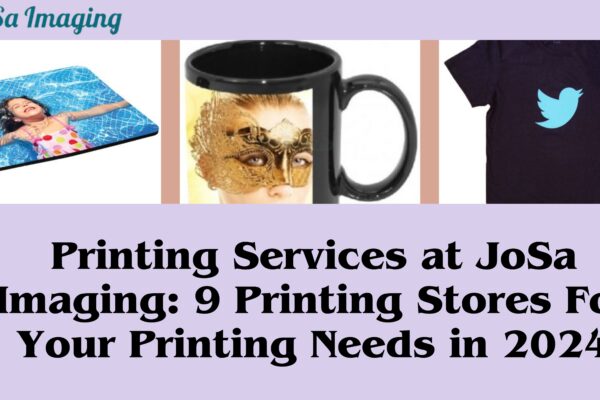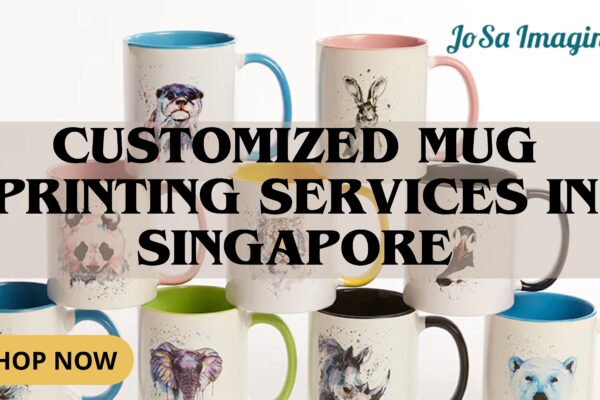When it comes to printing, choosing the right method can significantly impact the quality, cost, and turnaround time of your project. Two of the most commonly used printing methods are offset printing and digital printing. While both techniques are used for producing high-quality prints, they differ in terms of process, application, and cost-effectiveness.
If you need business cards, brochures, flyers, posters, or custom-printed merchandise, understanding the key differences between these two printing methods will help you make the best choice for your needs.
Offset printing has been the industry standard for decades, known for delivering high-quality, sharp, and consistent prints, especially for large-volume orders. On the other hand, digital printing has gained popularity due to its flexibility, fast turnaround, and cost-effectiveness for small-batch or personalized printing. In this guide, we will compare offset vs digital printing to help you decide which option best suits your specific needs.
What is Offset Printing?

Offset printing is a traditional printing technique that involves transferring ink from a metal plate to a rubber blanket and then onto the printing surface, such as paper, cardboard, or plastic. This indirect transfer process helps produce sharp, high-resolution prints with consistent color accuracy.
Offset printing is widely used for high-volume printing projects such as newspapers, magazines, brochures, books, and packaging materials. Due to its ability to print in bulk at a lower cost per unit, it remains the preferred choice for businesses that require large-scale, professional-quality prints.
One of the key features of offset printing is its use of the CMYK color model (Cyan, Magenta, Yellow, and Black) along with additional Pantone spot colors if needed. This ensures precise color reproduction, making it ideal for branding and marketing materials where color consistency is crucial. Additionally, offset printing can handle a wide range of paper types, finishes, and textures, providing greater flexibility in design and customization.
Advantages of Offset Printing
✅Cost-Effective for Large Orders – The per-unit cost of printing decreases significantly as the quantity increases, making it ideal for bulk printing.
✅High-Quality Prints – Offset printing delivers sharp images, rich colors, and smooth gradients, ensuring professional-quality results.
✅Consistent Color Accuracy – Uses the CMYK color model and Pantone spot colors, providing precise and uniform color reproduction.
✅Versatile Material Options – Can print on various paper types, finishes, and textures, including glossy, matte, and textured surfaces.
✅Efficient for Mass Production – Once the plates are set, offset printing can produce thousands of copies quickly with minimal variations in quality.
Disadvantages of Offset Printing
❌ High Setup Costs – Requires metal plates and setup time, making it expensive for small or one-time printing jobs.
❌ Longer Turnaround Time – Since the process involves plate-making and adjustments, it takes more time than digital printing.
❌ Limited Customization – Not ideal for personalized prints, such as customized names, numbers, or designs on individual items.
❌ Not Suitable for Small Orders – Due to high setup costs, offset printing is not cost-effective for low-quantity printing (e.g., fewer than 500 copies).
❌ Frequent Maintenance – Printing plates and presses require regular maintenance to ensure high-quality output, adding to the overall operational cost.
Offset printing is best suited for businesses that need large-scale, high-quality prints, but for small orders and quick customization, digital printing may be a better choice.
What is Digital Printing?

Digital printing is a modern printing technique that involves directly transferring digital images onto various materials without the need for printing plates. Unlike offset printing, which requires an extensive setup, digital printing works like an advanced version of an office printer, using toner or liquid ink to apply the design onto the surface.
This method is widely used for small-batch printing, personalized prints, and on-demand production, making it ideal for custom t-shirts, mugs, business cards, brochures, flyers, and more.
One of the biggest advantages of digital printing is its speed and flexibility. Since there is no need for plate-making, digital prints can be produced almost instantly, making it a great option for urgent printing needs. Additionally, digital printing allows for variable data printing (VDP), meaning each print can be customized with different names, numbers, or designs without requiring a new setup. This is particularly useful for personalized marketing materials, event merchandise, and one-off designs.
Advantages of Digital Printing
✅Fast Turnaround Time – With no need for setup or plate creation, digital printing offers a quick production time, often allowing for same-day or next-day printing.
✅Cost-Effective for Small Orders – Digital printing doesn’t require high setup costs, making it affordable for small print runs or one-time orders, such as custom t-shirts or personalized mugs.
✅Customization and Personalization – Digital printing allows for variable data printing, meaning each print can be customized individually, such as personalized names, numbers, or unique designs.
✅No Plate Charges – Unlike offset printing, digital printing skips the need for expensive plates, saving money on setup costs and making it more accessible for small businesses and custom projects.
✅Eco-Friendly – Digital printing produces less waste and consumes fewer resources compared to offset printing, as there are no plates to be disposed of or excess ink used in setup.
Disadvantages of Digital Printing
❌ Higher Cost Per Unit for Large Orders – For large print runs, the cost per unit tends to be higher in digital printing compared to offset, making it less cost-effective for bulk production.
❌ Limited Color Precision – Although digital printing uses the CMYK color model, it may not match the color consistency and accuracy of offset printing, especially for highly detailed designs or corporate branding.
❌ Limited Paper Types and Finishes – While digital printing works on a wide range of materials, it is typically more limited in paper finishes and textures compared to the versatility of offset printing.
❌ Slight Color Variations – Due to the nature of digital printing, there can be slight color variations between prints, which may not be suitable for projects requiring highly consistent color reproduction.
❌ Lower Quality for High-Volume Runs – For large-scale projects, offset printing may produce superior quality prints in terms of detail and sharpness, especially for high-resolution designs.
Digital printing is ideal for small runs, quick projects, and customization, but may not be the best option for large-volume printing where color consistency and cost-effectiveness are more critical.
Key Differences Between Offset and Digital Printing
Understanding these differences can help you choose the right printing method for your specific needs. Here’s a quick comparison to highlight the key contrasts between the two:
Feature | Offset Printing | Digital Printing |
| Setup Cost | High (Requires plates) | Low (Direct-to-print) |
| Best For | Large-scale printing | Small-batch, customized printing |
| Turnaround Time | Slower | Faster |
| Print Quality | High-quality, consistent | High-quality, varies slightly |
| Cost-Effective For | Bulk orders | Small orders & one-off prints |
| Customization | Limited | Easily customizable |
Which Printing Method is Best for Your Needs?
Choosing the right printing method depends largely on your project requirements, such as quantity, quality, turnaround time, and budget. If you need high-quality prints in large quantities—such as for business brochures, magazines, or packaging—and you want consistent color accuracy, offset printing is likely the best option. It offers lower costs per unit for bulk orders and delivers sharp, vibrant results.
However, if you need small batches, quick turnaround times, or customized prints (like personalized t-shirts, mugs, or business cards), digital printing is a more suitable choice. Digital printing is cost-effective for smaller runs and allows for greater flexibility, enabling you to print unique designs or adjust information for each print. Ultimately, your decision should align with your specific needs—whether it’s cost-efficiency for high volumes or speed and customization for smaller runs.
Why Choose Our Digital Printing Services in Singapore?
At JoSa Imaging, we specialize in digital printing services for businesses, events, and personal needs. Here’s why our customers love us:
✅ Fast Turnaround – Get your custom prints in as little as 24 hours.
✅ High-Quality Prints – Vivid colors and sharp details on t-shirts, mugs, tote bags, and more.
✅ Affordable for Small Orders – No high setup costs like offset printing.
✅ Customization Options – Perfect for corporate gifts, promotional items, and personal designs.
Need Custom Printing in Singapore? Contact Us Today!
Looking for custom t-shirt printing, mug printing, or corporate gift printing in Singapore? Let us help you bring your designs to life!
📞 Contact Us Now for a free quote and get high-quality prints delivered fast!
Conclusion
Both offset and digital printing have their advantages, but if you need small-batch, customized, and fast-turnaround printing, digital printing is the way to go. Whether you’re printing branded corporate gifts, personalized t-shirts, or custom mugs, digital printing offers flexibility, affordability, and quality.
For affordable and high-quality digital printing in Singapore, get in touch today! 🚀




